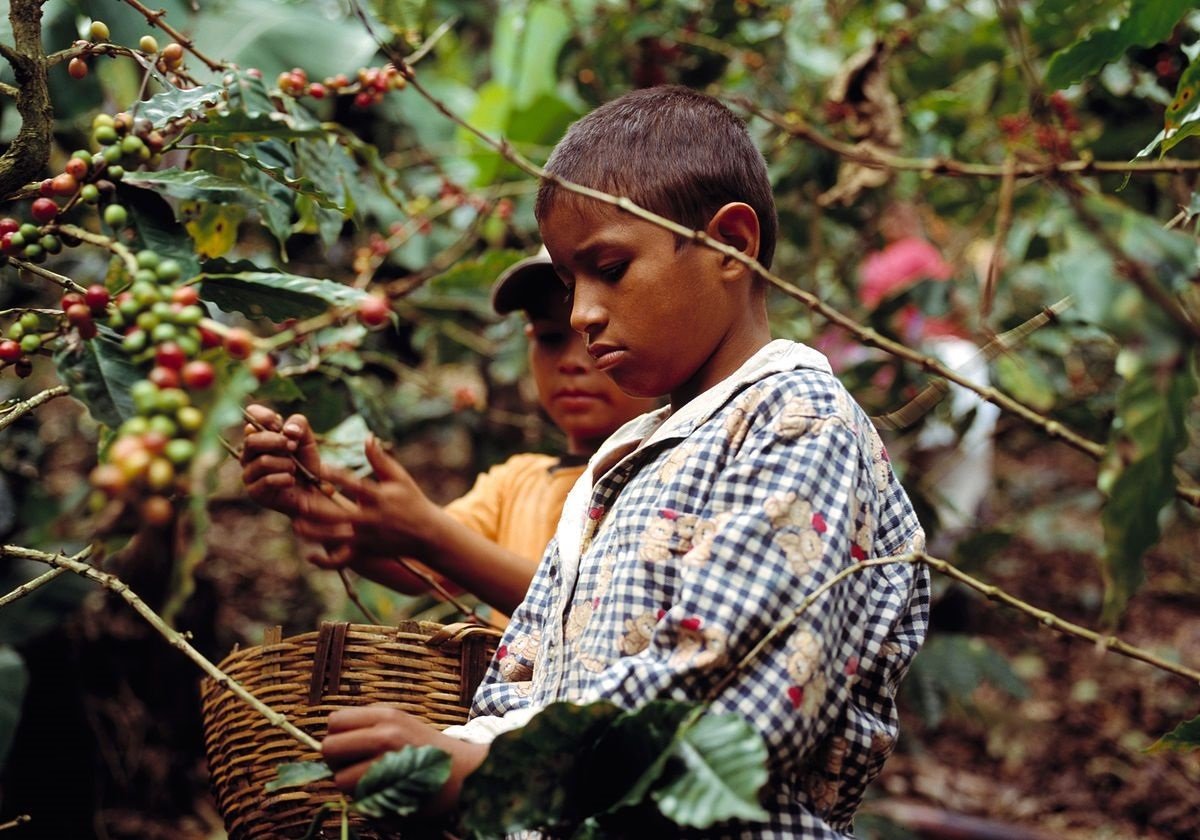
Driven in part by an increase in conflicts and climate-induced disasters, the number of child labourers in agriculture worldwide has increased substantially from 98 million to 108 million since 2012 after more than a decade of continuous decline, according to the latest estimates. Prolonged conflicts and climate-related natural disasters followed by forced migration have pushed hundreds of thousands of children into child labour.
Households in Syrian refugee camps in Lebanon, for example, are prone to resort to child labour to ensure the survival of their family. Child refugees perform a number of tasks: they work in garlic processing, greenhouses for tomato production, harvest potatoes, figs and beans. They are often exposed to multiple hazards and risks including pesticides, poor field sanitation, high temperatures, and fatigue from doing physically demanding work for long periods.
At the same time, efforts to eliminate child labour in agriculture face persistent challenges, due to rural poverty and the concentration of child labour in the informal economy and unpaid family labour.
FAO stresses that child labour in agriculture is a global issue that is harming children, damaging the agricultural sector and perpetuating rural poverty. For instance, when children are forced to work long hours, their opportunity to attend school and develop their skills is limited, which interferes with their ability to access decent and productive employment opportunities later in life including opportunities in a modernised agricultural sector.
"Children who work long hours are likely to continue to swell the ranks of the hungry and poor. As their families depend on their work, this deprives the children of the opportunity to go to school, which in turn prevents them from getting decent jobs and income in the future," said Daniel Gustafson, FAO deputy director-general (programmes).
"Since more than 70% of child labour worldwide takes place in agriculture, it is vital to integrate child labour into national agricultural policies and address the issue at the household level. Otherwise, it will further exacerbate poverty and hunger in rural areas. We need to break this vicious circle if we want to achieve progress towards sustainable development goals. Zero hunger is not possible without zero child labour."
Child labour is defined as work that is inappropriate for a child's age, affects children's education, or is likely to harm their health, safety or morals. However, not all work carried out by children is considered child labour. Some activities may help children acquire important livelihood skills and contribute to their survival and food security.
Yet, much of the work children carry out in agriculture is not appropriate for their age. It is often hazardous and can interfere with their well-being. For instance, when children work in fields treated with pesticides, stay up all night on fishing boats, or carry heavy loads, it can interfere with their social and physical development.
FAO and its partners are trying to end the dependence of family farms and enterprises on child labour through improving skills of especially small family farmers, providing access to inputs and credit, especially for women, and implementing sustainable agricultural practices in order to improve productivity and make smallholder farms viable enough to employ adults in decent work. The organisation also supports countries in integrating child labour in national policy, legislation, programmes and strategies.
As part of its wider approach to eliminate child labour in agriculture, FAO promotes efforts to boost the incomes of rural families so that they have the means to send their children to school rather than work.
FAO has also developed country-tailored materials offering practical guidance, such as a handbook for monitoring and evaluating child labour in agricultural programmes and the Facilitators' Visual Guide: Protect Children from pesticides.
In Lebanon, FAO has developed a short visual story about the dangers of pesticides for younger children, who are potentially illiterate. It focuses especially on Syrian refugee children. The agency is also working on a mobile app in the form of a game, which looks at risks and hazards associated with different agricultural settings such as horticulture, field crops and greenhouses.
In Uganda, FAO, in coordination with the Ministry of Agriculture, Animal Husbandry and Fisheries and the Ministry of Labour, Gender and Social Development, organises trainings for local agricultural extension workers, labour officers, secondary school teachers and students to promote safe work for youth and prevent hazardous child labour in agriculture in several districts, including refugee-hosting communities in the West Nile.
• Nearly three out of every four children in child labour working in agriculture.
• There are 10 million more children in agriculture since 2012.
• Of the 152 million child labourers, the vast majority - 108 million - are engaged in farming, livestock, forestry or aquaculture.
• Nearly 70% of child labour is unpaid family labour.
• The incidence of child labour in countries affected by armed conflict is 77% higher than the global average.
• Nearly half of all child labour in the world now takes place in Africa: 72 million, or one in five of Africa’s children are in child labour and the vast majority is perfomed in agriculture, followed by Asia with 62 million.